| |
|
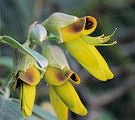 | |
| MaltaWildPlants.com by Stephen Mifsud |

|
| |
|
|
 |  |  |  |
| External Links: |
|
Pancratium maritimum (Sea Daffodil) |
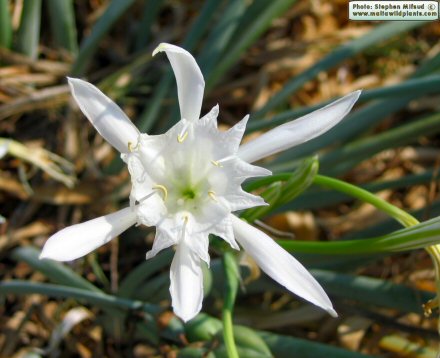
Pancratium maritimum (AMARYLLIDACEAE.)
Images for this profile are taken from the Maltese Islands after year 2000. |
|
| Nomenclature |
Species name : | Pancratium maritimum L. | Authority : | Carl von Linne, Sweden, (1707 - 1778) | Synonyms :
(basionym or principal syn.) |
|
Plant Family : | Amaryllidaceae Jaume St.-Hil
(Daffodil or Amaryllis Family) | English name(s) : | Sea Daffodil, Sea Lily, Sand Lily | Maltese name(s) : | Pankrazju selvaġġ, Narċis tar-Ramel, Ġilju tar-Ramel | Status for Malta : | Indigenous. Present on the Maltese islands before man | Name Derivation : |
Pancratium: Word used to refer for power and strength, probably referring to the strength of such plants which grow in extreme climates such as dry and very hot sand dunes during summer. (Greek origin ); 2 = Strength, probably referring to the strength of such plants which grow in extreme climates like this one in the dry and hot sand of Summer. (Greek).
maritimum: Maritime; related to the coast or the seashore. (Latin origin ); 2 = Sea borne, related to the sea, since it is usually found at sandy areas beside the sea. (Latin).
| Remarks : | |
|
| Morphology and structure |
PLANT STRUCTURE: |
Character | Growth Form | Branching | Surface |
Description | | | |
General
Picture |  | 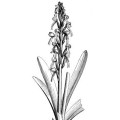 |  |
|
LEAVES: |
Character | Arrangement | Attachment | Venation |
Description | | | |
General
Picture | 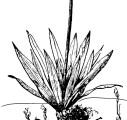 | 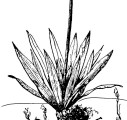 |  |
| |
Character | Leaf Shape | Leaf Margin | Remarks |
Description | | | |
General
Picture |  |  |  |
|
FLOWERS: |
Character | Colour | Basic Flower Type | No. of Petals | No. of Sepals |
Description | Pure white | | 6 To be botanically precise, the flower has 3 sepals (outer whorl) and 3 petals (inner whorl) which are identical, and so they are collectively referred to as 6 tepals or perianth segments. | 0 |
General
Picture | | 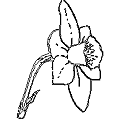 |  |  |
| |
Character | Inflorescence | Description | Ovary | Stamens |
Description | | Large conspicuous flower made up of 6 slender petals and a funnel shaped corolla tube at the centre that has a dented brim. There are 6 stamens fused with the corolla wall and a central white style. | | |
General
Picture | 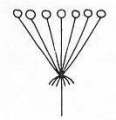 |  |  | 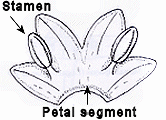 |
| |
Character | Scent | Average Flower Size | Pollen Colour | Other Notes |
Description | YES Highly scented with a sweet fragrance. | 80 mm in diameter. Tube-corolla measures 35mm across and 50mm long. | Pale Yellow | - |
|
SEEDS: |
Character | No. Per Fruit | Shape | Size | Colour |
Description | 12-40 | Irregular shape Consists of one rounded smooth side and 2 or 3 ragged and roughly straight sides. Sometimes cone shaped. | 9-12mm | Charcoal black |
General
Picture |  |  |  |  |
|
FRUIT AND OTHER BOTANICAL DATA: |
Character | Fruit Type | Colour of Fruit | Subterranean Parts | Other Notes |
Description | | Light brown | | - |
General
Picture | 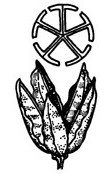 |  |  |  |
|
|
| Plant description and characters | |
Life Cycle: | Perennial. |
Growth Form: | GEOPHYTE (bearing underground bulbs, rhizomes, stolons, etc.) |
Habitat: | Sandy shores |
Frequency: | Scarce |
Localities in Malta: | Ghajn Tuffieha, Ghadira Bay, Ramla tat-Torri, Ramla l-Hamra (Gozo). |
Plant Height: | Up to 45cm. |
| Jul-Oct |
Protection in Malta: | Protected by law: Schedule VI of [S.L. 549.44] (strictly protected species) |
Red List 1989: | Threatened status for the Maltese Islands and has been listed in the Red Data Book (1st ed.) |
Poison: | |
This monocotyledonous perennial plant is seen only on sandy beaches during the hottest months of Summer. It can withstand these extreme conditions because its bulbs are laid down deep underground and since its habitat is sand, it is not that difficult for its shoots to make their way up through several inches of loose sand. The independent leaves and the single flowering stalk grow directly from the large bulb about 5 - 7cm across
Numerous leaves are seen in the begining of Summer emerging from the sand, however the flowers start blooming later in August till September. The leaves consists of thick, linear blades which are fairly broad - about 10-20mm wide - and have blunt brownish tips. They are often found spirally contorted or twisted.
The flowering stem is also thick and robust, probably to withstand high currents of wind present by the sea. This stem rises about 15-40cm above sand level and give rise to an umbel inflorescence of 3 to 14 large flowers. At this locus there are also 2 thin, paper-like bracts that usually dry up and turn beige brown in colour. The buds are finger like structures which are striped green and white.
These open up and form large, actinomorphic, highly scented flowers consisting of 6 slender petals, each about 40-50mm long with a green central stripe at the underside, and a large funnel-shaped corolla-tube at the centre, between 5 to 7cm long. The outer and hence upper margin of the corolla tube is further decorated by 12 triangular teeth, hence making it look like a crown or "corona". The petals are fused to the base of the crowned corolla. 
There are 6 anthers between the 12 teeth in an alternate fashion. The filaments are fused with the corolla wall, and they project out individually just by few mm above the brim. Just beneath the anther, the thick and firm filament constricts considerably and becomes very thin and flimsy, making the anthers sway and swing to and fro easily with wind or slight movement. The pale yellow anthers are long and often curved (banana shaped) and produce large amounts of yellow pollen. The female part is a white, slender and long style with a whitish stigma that is 3-parted but barely visible by the naked eye. The style goes down through the thin flower neck to reach the inferior ovaries located just above the flowering stem somewhere behind the bracts.
 The fertilized ovaries produce a large and oval fruit capsule (2-3cm long) with 3 conspicuous longitudinal swellings. When ripe, the fruit capsule splits open and drops on the sand its large, charcoal-black seeds, without any special dispersal mechanism. The seeds are about 9-12mm in size and have an irregular shape, usually with one rounded, smooth side and 2 or 3 flattened and often ragged sides. The seed has a soft padded-like texture which protects the real hard seed inside. This is smaller (3-4mm) and pale brown in colour. The padding serves as an insulation from the excessive heat on the sand during the long dry Summer days. The fertilized ovaries produce a large and oval fruit capsule (2-3cm long) with 3 conspicuous longitudinal swellings. When ripe, the fruit capsule splits open and drops on the sand its large, charcoal-black seeds, without any special dispersal mechanism. The seeds are about 9-12mm in size and have an irregular shape, usually with one rounded, smooth side and 2 or 3 flattened and often ragged sides. The seed has a soft padded-like texture which protects the real hard seed inside. This is smaller (3-4mm) and pale brown in colour. The padding serves as an insulation from the excessive heat on the sand during the long dry Summer days.
|
|
| Information, uses and other details |
Origin and Nativity
the plant has originated from the Mediterranean basin and is spread throughout. [ 274, WWW-14] It is reported by Khalifa Elbakshi (personal communication) that P. maritimum is quite common in Libyan sea shore wher it grows naturally.
Edible Uses
There are reports stating that the seeds [89] and the cooked bulbs [2, 105] can be eaten. The latter report is somewhat dubious since the bulb is poisonous. [KF]
Cultivation and Propagation Details
Requires a light, very well drained sandy soil in a very sunny position [42]. Requires a hot dry summer in order to fully ripen its bulb. Tolerates temperatures down to about -5°C [200]. The bulb should be planted deeply and rapid spring growth should be encouraged [1].
Seed is best sown as soon as it is ripe in a greenhouse [200]. Pre-soak stored seed for 1 hour in warm water and then sow in spring in a warm greenhouse in a light sandy soil [1]. Germination usually takes place within 1 - 3 months at 22°C. Sow the seed thinly so that the seedlings can be left undisturbed in the pot for their first two years of growth. Give them an occasional liquid feed in the growing season to ensure they do not become nutrient deficient. When the plants become dormant in late summer, pot up the small bulbs placing 2 bulbs in each pot. Grow them on for another one or two years in the greenhouse before planting them out when they are dormant in late summer.
Growing conditions and tips according to reference [WWW-75]
o Sand on 1/2 meter deep (can be river sand).
o Plantation at 30 cm deep.
o No moving the plants for some years if you want flowers.
o No water in summer and never let the water remain on ground surface.
o Sunny position (on south) High temperatures and low humidity are accepted.
Other uses
The woolly hair on the inside of the seed are used to weave felt shoes and other garments [89, 148]. It was also used by many in the past and nowadays as an ornamental plant since its elegant flowers and strong sweet scent that can be sensed for a considerable long distance. Ideal in gardens beside the sea side or sandy terrains. [WWW-47]
Medicinal uses
The plant has the following medicinal properties: [WWW-66].
| Antifeedant |
An agent usually used on vegetation and crops to be protected from being eaten by herbivores and insects such as locusts [WWW-57] |
| Emetic |
An agent that causes vomiting, so as the stomach is emptied from its contents. [WWW-57] |
| Hypotensive |
Agents causing diminished tension or pressure in a person [WWW-57] |
| Pesticide |
A chemical which is used to kill unwanted organisms such as rats, insects, nematodes, etc. [WWW-57 ] |
| Purgative |
A purging medicine; stimulates evacuation of the bowels. [WWW-32] |
| Splenitis |
Inflammation of the spleen. [WWW-57 ] |
Some pancratium species also have psychoactive activities according to the report below, but it does not specify and mention if P. maritimum also have this activity.
Pancratium trianthum is considered to be psychoactive by the Bushmen in Dobe, Botswana. The bulb of this perennial is reputedly rubbed over incisions in the head to induce visual hallucinations. Nothing is known of its chemical constitution. Of the 14 other species of Pancratium, mainly of Asia and Africa, many are known to contain psychoactive principles, mostly alkaloids. Some species are potent cardiac poisons. [WWW-76]
Main active constituents of the Plants
The following constituents have been extracted from the bulb, shoot or whole plant as indicated below [WWW-66]:
- DEMETHYLHOMOLYCORINE (Bulb)
- GALANTHAMINE (Bulb)
- HAEMANTHIDINE (Bulb)
- HIPPEASTRINE (Bulb)
- HOMOLYCORENINE (Bulb)
- HOMOLYCORINE (Bulb)
- HORDENINE (Shoot)
- LYCORENINE (Bulb)
- LYCORINE (Bulb)
- PANCRACINE (Plant)
- PANCRATINE (Bulb)
- POETARICINE (Bulb)
- SICKENBERGINE (Bulb)
- TAZETTINE (Bulb)
- VITTATINE (Plant)
From the list above list, 5 are Pesticide; 3 that are either Hypotensive, Antifeedant, Analgesic, Anticholinesterase or Hypnotic; 2 are Myocontractant or Sedative. [WWW-64]
Berkov S et al. performed a GC/MS analysis of alkaloids from leaves, bulbs and roots of Pancratium maritimum. From the identified 16 alkaloids, 5 alkaloids were reported for the first time for this plant. Several compounds with pharmacological activity were found. Haemanthamine was the main alkaloid in the leaves and bulbs whereas galanthane was found to be the main alkaloid in roots. [316]
Bulblet formation in vitro and plantlet survival extra vitrum.
Twin scale explants of Pancratium maritimum were cultured on MS (Murashige and Skoog, 1962) supplemented with BA (6-benzylaminopurine) and NAA (α-naphthalene acetic acid), each at concentrations of 0, 5, 10 or 20 μm, alone or in combination. Each explant produced 3-4 adventitious bulblets when cultured on MS with or without BA, whereas, in all combinations of BA and NAA (or NAA alone) the number of bulblets per explant was reduced. Bulblets derived from explants without growth regulators were either transferred to the soil or subcultured in vitro on MS supplemented with various combinations of BA and NAA, each at concentrations of 0, 0.5 or 5 μm. Plantlets with leaves and roots were produced on MS with the addition of 5 μm NAA alone or with 0.5 μm BA, which then were transferred to the soil. Only 15% of the plantlets survived after transplantation, while 100% of the bulblets of more than 200 mg and 69% of the bulblets of 100-200 mg survived for at least 12 months. Abstract from Dragassaki et al, 2003 [317]
Antimalarial activity screening of some alkaloids and the plant extracts from Amaryllidaceae.
Four groups of Amaryllidaceae alkaloids, namely lycorine-, crinine-, tazettine-, and galanthamine-type, as well as plant extracts of the Amaryllidaceae plants (Pancratium maritimum, Leucojum aestivum, and Narcissus tazetta ssp. tazetta) growing in Turkey were evaluated in vitro for their ability to inhibit Plasmodium falciparum growth by a high-throughput screening method with a 96-well microtiter plate. All four groups of alkaloids exhibited antimalarial activity at different potencies. 6-Hydroxyhaemanthamine, haemanthamine and lycorine were found to be the most potent alkaloids against P. falciparum (T9.96) and galanthamine and tazettine had the least potent activity against P. falciparum (K1). Copyright 2003 John Wiley & Sons, Ltd. [318]
Insecticidal, acaricidal and synergistic effects of 'soosan', Pancratium maritimum extracts and constituents.
In assessing the pesticidal activity of soosan, P. maritimum, the bulbs and leaves were extracted using acetone/ethanol & ethanol as solvents and mosquito larvae C. pipiens, as a test organism. The actone/ethanol extract of bulbs was more toxic (LC50: 25 ppm) than that of the leaves (LC50: 75 ppm). Crude alkaloids, lycorine, terpenes & sterols and fixed oil were isolated from soosan bulb. their percentages were: 0.193, 0.02, 0.13 and 3.3%, respectively. The acetone/ethanol extract showed a strong aphicidal activity to Aphis gossypii with LC50 of 0.028% followed by lycorine, soosan oil and crude alkaloids with LC50 values of 0.07, 0.28 and 0.3% respectively. Also, the acetone/ethanol extract showed high toxicity to Spodoptera littoralis 4th instar larvae, with LD50 value of 2 Mg/larva. In addition, the crude alkaloids ethanol extract and the oil of soosan bulbs showed acaricidal activity against the two spotted spider mite, Tetranychus urticae with LC50 values of 0.2, 0.36 and 1.5%, respectively. Synergism studies on the A. gosspii indicated that lycorine, the principal alkaloid of soosan bulbs, strongly synergized, the OP insecticide cyanophos and reducing its LC50 values from 120 to 48 ppm. On the other hand, the aqueous extract of soosan bulbs synergized the toxicity of actellic and permethrin in Tribolium castaneum which reduced their LC50 values from 80 to 46 ppm and from 1000 to 550 ppm, respectively. Also, ethanol and petroleum-ether extracts synergized the toxicity of reldan and permethrin, respectively, in the same insect. [319]
Antineoplastic agents, 301. An investigation of the Amaryllidaceae genus Hymenocallis.
Seven species (and one cultivated variety) of Hymenocallis (Amaryllidaceae) and the related Pancratium maritima, representing a broad geographical selection, were investigated as sources of pancratistatin - now undergoing preclinical development as an anticancer agent. Pancratistatin was found to be a constituent of H. speciosa (Singapore), H. variegated (Singapore), H. pedalis (Seychelles), H. expansa (Bermuda), H. sonoranensis (Mexico), and P. maritimum (Israel). Only two species of Hymenocallis failed to yield one or more of the related cell-growth inhibitory isocarbostyrils such as narciclasine , 7-deoxynarciclasine, and 7-deoxy-trans-dihydronarciclasine. [320]
Personal Observations
Adaptation and life cycle of P. maritimum in its severe habitat
It is very difficult to figure out how a graceful and elegant flower like the Sea Daffodil is able to grow in the dry sand during the hot and dry Maltese Summer with temperatures reaching above 40C in the scorching sun. The main benefit to live in such an adverse habitat is that there will bo no competition for food, space, and pollinating insects from neighbouring plants, simply because these do not cope and survive. In fact, the Sea Daffodil dominates many of the coastal sandy shores in Malta.
The key feature for survival for this plant is its bulb. This is buried deep down the sand inside fertile soil or clay. Roots are formed from the bulb and spread inside the clay or soil layer which retains efficiently water from the rainy seasons for a long time. The deep sand layer contributes as an insulator for water from evaporating quickly.
The bulb forms leaves at end of Spring, where climate conditions are not impossible. Energy and nutrients are stored in the bulb at this phase. At August, all the stored food of the bulb is utilized to form a single flowering stem which produces 3-12 flowers; the leaves usually wither and dry by now. It is not difficult for the leaves and the flowering stem to emerge through half a meter or so of sand since this is loose and 'soft'. In a short time the fertilized flowers make fruit and these produce black seeds which drop on the sand. It is not clear how the light and bulky seeds (1cm approx) reach the fertile layer of soil under the thick layer of sand. Maybe it goes down slowly and gradually and may take few years until it reaches the fertile layer so that it would be possible to germinate. However a faster reproduction method is asexually, that is by propagation of new buds, each giving rise to a new plant next season [SM]
|
|
| Links & Further literature
(0 papers) |

Google Web |

Google Images |

Google Scholar |

Research Gate |

Wikipedia |

JSTOR |

GBIF |

Med Checklist |

Cat. of Life |

EoL |

IPNI |

World Flora Online |

Plants of the World Online |

Vienna Virt. Herb. |

RBGE Herbarium |

KEW Herbarium |

MNHN |

Arkive |
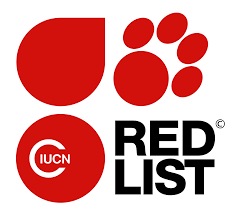
IUCN |

CABI |
Kindly Email if there are papers and publications about local
studies or information about this species to be included in the list above.
|
| Photo Gallery (36 Images) |  |
 |
 |
 |
IMAGE: PNCMT-01 Photo of 2 flowers, silky white and have a strong sweet fragrance. |
IMAGE: PNCMT-02 Photo of flower which consists of 6 slender sepals and a corolla tube with 6 adnate stamens. |
IMAGE: PNCMT-03 Photo of flower (side view) upon opening up. |
IMAGE: PNCMT-04 Photo of flower (side view) taken at the sandy beach of Ramla Bay in Gozo. |
 |
 |
 |
 |
IMAGE: PNCMT-05 Close up photo of the corolla with its corona (12 triangular teeth at the brim) and the 6 anthers. |
IMAGE: PNCMT-06 Close up photo of the stamens. Also visible is the white style and its slightly swollen stigma. |
IMAGE: PNCMT-07 Photo of flower (top view) showing in detail the main parts of the flower, that is the 6 tepals, the tubular corolla with a crowned rim, the 6 anthers and the central style+stigma. |
IMAGE: PNCMT-08 Photo of flower (top view). |
 |
 |
 |
 |
IMAGE: PNCMT-09 Scanned image of a flower cluster. Inflorescence is of the umbel type, where flowers arise out from the same point. Note the elongated buds and the paper like beige/brown bracts. |
IMAGE: PNCMT-10 Scanned image of the flowering part. The flowers have a tall neck where at its base there is the inferior ovary. Flower length is about 15cm. |
IMAGE: PNCMT-11 Scanned and annotated image of flower (top view). Actinomorphic flower consisting of 6 star-like tepals (petals) a funnel and crowned corolla tube and 6 stamens with long anthers that are often curved. |
IMAGE: PNCMT-12 Scanned image of flower (side view) showing in detail the corolla tube. Note how the filament is bulging and well visible in the wall and it emerges between the indentations of the corona by few mm. |
 |
 |
 |
 |
IMAGE: PNCMT-13 Scanned image of a transversely dissected flower to show the long style passing through the flower neck, and the inner wall of the corolla with adnate (fused) stamens and their banana shaped anthers. |
IMAGE: PNCMT-14 Scanned image of the reproductive organs of the flower, that is the conspicuous stamens and the long style with a slightly swollen stigma. |
IMAGE: PNCMT-15 Close up photo of curved mature stamens that looks like a banana. Note how the filament gets very thin just under the anther. This makes the latter to swing and sway to and fro with wind. |
IMAGE: PNCMT-16 Scanned image of the swollen ovary several centimeters below the perianth. For this reason ovaries are described as inferior. |
 |
 |
 |
 |
IMAGE: PNCMT-17 Photo of long linear leaves all coming from the underground bulb buried down the sand. Note the characteristic twisting the leaves sometimes exhibit. |
IMAGE: PNCMT-18 Photo of few remaining leaf blades of the plant taken in the begining of September. Flowering season end in the very begining of October. |
IMAGE: PNCMT-19 Photo of the habitat of the plant, taken at GhajnTuffieha at the end of August 2004. |
IMAGE: PNCMT-20 Photo of 2 plants in situ. Leaves already dried up. |
 |
 |
 |
 |
IMAGE: PNCMT-21 Photo of a flowering stem emerging from the sand. |
IMAGE: PNCMT-22 Photo of some plants showing buds, flowers and fruit. |
IMAGE: PNCMT-23 Photo of the finger-like buds which are white and green striped. |
IMAGE: PNCMT-24 Photo of several fruit capsules, some split open and exposing the black seed. |
 |
 |
 |
 |
IMAGE: PNCMT-25 Photo of several fruit capsules in situ. |
IMAGE: PNCMT-26 Scanned image of the ovoid fruit capsules, which can be as large up to 35-40mm long. Note that it has 3 longitudinal swellings. |
IMAGE: PNCMT-27 Scanned image of a fruit capsule with the dried flower still attached. |
IMAGE: PNCMT-28 Scanned image of a cross section dissection through fruit capsule. It is divided into 3 carpels which hold several white developing ovules. |
 |
 |
 |
 |
IMAGE: PNCMT-29 Scanned image of a fruit capsule splitting open to release its seeds. There are between 15-25 seeds per capsule. |
IMAGE: PNCMT-30 Photo of a split open fruit with few black seeds still hanging on. There is no means of dispersion, the seeds just fall off on the sand. |
IMAGE: PNCMT-31 Magnified scanned image of the charcoal-black, somehow soft seeds. They have a round smooth side, and 2 or 3 straight, ragged sides. Sometimes cone shaped. |
IMAGE: PNCMT-32 Dissection through seeds reveal that it consists of few mm of black padding tissue with the 'true' seed at the center. The padding probably serves as an insulation from the excessive heat and dryness present on the sand at Summer. The true seed is hard and pale brown. |
 |
 |
 |
 |
IMAGE: PNCMT-33 Scanned image of 3 bulbs. The size varies and could be between 4 to 8cm. New bulbs are usually small while bulbs of established plants are larger. |
IMAGE: PNCMT-34 Colour illustration of the plant. |
IMAGE: PNCMT-35 |
IMAGE: PNCMT-36 Photo of few plants with imature scapes that emerege from the sand and grow to about 15-40cm high. The scape's inflorescence is initially enclosed in a papery spathe and when mature, it opens to give a set of 3-14 flowers. |
|
| | |

